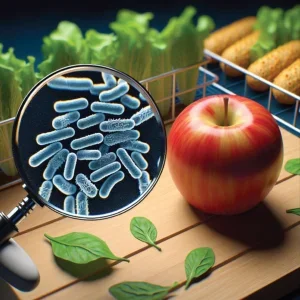
As the world grapples with one of the biggest outbreaks of avian influenza (bird flu) for decades, the question of whether eating poultry is safe has been asked several times over. Of course it is, but it remains the case that some communities are mistrusting of that – as they are with other matters relating to food, its origins and the story behind its benefits or otherwise to our health.
This recent outbreak, though, highlights the role that regulators play to protect the public. A role that has never been as important as we face a unique and evolving food safety picture. “There is growing recognition that without safe food, we cannot achieve food security,” says Catherine Bessy, a senior food safety officer of the Food Systems and Food Safety Division of the United Nation’s (UN) Food and Agriculture Organisation (FAO). “Therefore, without taking action at all levels to ensure the availability and access to safe and nutritious food, achieving sustainable development goals (SDGs) becomes an even greater challenge.”
“The visibility and awareness of food safety issues continue to increase,” adds Sarah Cahill, senior food standards officer of the Secretariat for the Codex Alimentarius Commission (Codex). “We have, from a global perspective, seen this through the ongoing engagement and commitment of countries, and discussions on food safety issues during the pandemic.”
Regulators contend with challenges
That may be true, but recent months have turned the world’s focus firmly on the ability to respond to growing concerns; the impact that climate change might have on foodborne disease or what an increasingly unstable geopolitical climate could do to global food supplies and quality. “We are still grappling with supply chain shortages stemming from Covid and the war in Ukraine,” says Taryn Webb, health communications specialist with the US Food and Drug Administration’s (FDA) Center for Food Safety and Applied Nutrition, “including strains in the availability of labour, raw materials and other ingredients which continue to challenge food supply.” The US is not alone with its difficulties. The UK’s Food Standards Agency (FSA) has said it has had to pull back on some work, citing increased demands on capacity. While it insists its focus remains on reducing foodborne disease, the agency admitted some of its work was delayed or even shelved, including scheduled reviews on food safety guidance for businesses and a consultation and legislation on making the Food Hygiene Rating Scheme mandatory across England.
So, are regulators up to the challenge? What even are those challenges? Webb acknowledges there is a shifting food safety and supply landscape: “We are seeing rapid innovation in food across the board. We are seeing things like new gene-edited crops, cultured animal cell food products, and novel approaches to produce food ingredients.” She adds, though, that the agency is committed to providing support because these developments result in more choice for consumers and some of the technology being used will be “critically important as industry works to mitigate the adverse impact of climate change on food production”.
What’s the global picture for 2023?
Right now, climate change, natural disasters, the pandemic, political instability and armed conflict are jeopardising food supplies. The World Food Programme warns there is a global food crisis of unprecedented proportions. Compared with the situation pre-pandemic, in the span of only two years, the number of people facing or at risk of acute food insecurity increased from 135 million across 53 countries, to 345 million in 82 countries.
This crisis has led some to caution that food safety might be overlooked. This is a view echoed by Cahill: “This is a concern and a reason why food safety needs to remain front and centre to addressing food security. If food is not safe, it is not food. Overlooking food safety will ultimately hinder efforts to achieve food security.” She acknowledges there are challenges, including in many parts of the world mycotoxin contamination of staples remains a concern. “So, risk management strategies need to be put in place which try to find a balance between food availability and food safety, while efforts continue to improve the safety of the food supply.”
Both Bessy and Cahill agree that while food-safety challenges are often unique region-to-region, globally there are several to contend with. These include: identifying new and emerging risks arising from climatic and environmental changes, and addressing them in a time-sensitive way; the need to ensure food safety remains at the centre of the efforts for change, particularly as system transformation gains pace; ensuring consumers and the food chain receive valid and reliable information when it comes keeping food safe, critical as the prevalence of the likes of social media continues to grow; ensuring technology is appropriately applied, and that certain parts of the world are not left behind; and the unique challenges posed by new or emerging foods, such as cell-based.
“As food production systems, production environments, ingredients and types of products continue to evolve, the approach to producing food safely will also evolve,” says Bessy. She believes regulators need the high-level commitment of their government to enable them to respond to change and evolve in a timely manner. “Without that, often outdated systems are being used to try and address new problems,” she says.
Bessy adds that as management systems evolve towards better data management, away from paperbased activities to digital systems, it will prove to be “not an easy transition” and particularly for developing countries. There is always a need to identify potential hazards and assess the risk when a change is introduced to the way we grow, process, transport and prepare food, she continues. For example, if there is a change to ingredients – such as a reduction in sugar or salt to align with new public health requirements – it will require an assessment of any alternative ingredients. For the impact on the broader public health, the impact of microbiological risks, for example, will need to be addressed.
“We are still grappling with supply chain shortages stemming from Covid and the war in Ukraine, including strains in the availability of labour, raw materials and other ingredients which continue to challenge food supply.”
Taryn Webb
Cahill adds that global challenges may appear to not be immediately connected to food safety, such as climate change, will also have an impact on food safety. “Policies need to evolve to take the aspect of sustainability into account; systems need to factor that in when making choices about the instruments they will use – maybe less or more ‘energy saving’,” she says. “Hazards and risks will evolve too – including well-known hazards that migrate to different climatic zones, such as mycotoxins in ‘temperate’ climates.”
Ensuring a safe supply chain
A late 2022 review of FDA activity by the Reagan-Udall Foundation, commissioned by FDA Commissioner Dr Robert Califf, highlighted ways the US could better secure its food systems and supply chains. It identified critical tracking events – such as cooling, initial packing, shipping, receiving and transforming the goods – that require records to be captured containing key data elements as an area of concern. This, though, is not exclusive to the US.
“Knowledge of where ingredients and food have come from, and their journey, are key to food safety management,” says Bessy. Information on any transformation process, such as temperature monitoring and shipping and receiving dates, can provide a better understanding of whether a hazard may have been removed or reduced. “The critical tracking of events may vary according to the commodity and its perishability. But having consistent and consensus information is what will ultimately make tracking such events a critical resource in food safety management.”
“Knowledge of where ingredients and food have come from, and their journey, are key to food safety management.”
Catherine Bessy
The US is tackling the growing thorny issue of traceability as part of its ‘New Era of Smarter Food Safety’ initiative – which leverages technology and other tools and approaches to create a safer and more digital, traceable food system. The FDA issued its final rule on Requirements for Additional Traceability Records for Certain Foods in November last year. It hopes this will enhance traceability through record keeping requirements beyond those in existing regulations, for anyone that manufactures, processes, packs or holds foods included on the Food Traceability List. “These new requirements – compliance dates do not arrive until 20 January 2026 – identified in the final rule will allow for faster identification and rapid removal of potentially contaminated food from the market, resulting in fewer foodborne illnesses and/or deaths,” says Webb.
Monitoring, though, is not the only issue exercising the minds of those involved in the food supply chain right now. Cahill says there are other trends she and other stakeholders are seeing for 2023, including: the increased availability of digital tools to support remote inspection activities, which she says represents a potential benefit that many countries still have to assess and develop good practices for their meaningful use; increased awareness in low and middle-income countries that the risk analysis paradigm should be better used in building their programmes of inspection; and an increased use of electronic certification systems in addition to other types of mandatory certification processes. Although, she says, the latter needs to be better managed by the sector to avoid “the potential multiplication of parallel systems”.
Ensuring global food safety is complex and multifaceted. Although global events and the climate are arguably hindering it at both a domestic and international level, as Benjamin Franklin said, “from adversity comes opportunity”. To make good on that, stakeholders will need to come together, including food regulators. “We all have limited resources and, with the 2030 agenda, limited time,” say Bessy and Cahill. “FAO and WHO have long worked together in this regard and continue to do so, developing a global food safety strategy and our FAO food safety priorities in a coordinated and cohesive manner. But we’re not the only agencies working on food safety, so coordination is key to speed up progress and avoid duplication.”
For the FDA, its ‘New Era of Smarter Food Safety’ initiative will look to leverage technology and other tools and approaches to create a safer and more digital, traceable food system. Webb says it will “address issues across the food safety spectrum through the use of modern tools and approaches to enhance traceability, improve predictive analytics, respond more rapidly to outbreaks, address new business models, reduce contamination of food and foster the development of stronger food safety cultures”.
Almost acknowledging the difficulties that the likes of the FDA and FSA face, the two agree that resources remain a key challenge for many: “In the past few years many countries diverted resources to deal with the pandemic, which meant many other parts of national governments had even less than before to deal with their respective areas.” It is clear that another old adage is more palpable today than it has ever been – we need to do more, with less. Webb is, however, keen to point out that the work of the FDA continues, despite increased pressures: “Our food safety standards do not change during shortages, in fact food safety concerns can become even more important.” How 2023 will unfold remains to be seen, but the understanding is it will not be easy.






